wind instruments
Largo – Allegro molto; Minuet and Trios I and II; Adagio; Minuet (Allegretto) and Trios I and II; Romance (Adagio); Theme with Variations; Rondo (Allegro molto)
The Viennese newspapers of 23 March 1784 announced a concert at the Imperial Royal National Court Theatre to be given by the clarinettist Anton Stadler, ‘at which, among other well chosen pieces, a large wind work of a very special kind composed by Herr Mozart will be performed’. A member of the audience, Johann Friedrich Schink, listed the thirteen instruments in his diary and noted that ‘at each instrument sat a master – oh, what an effect it made – glorious and grand, excellent and sublime!’ Although Schink heard only four movements, this must have been the Serenade in B flat, K361. (The misspelt title ‘Gran Partitta’ and the erroneous date ‘1780′ were added to Mozart’s manuscript by an unknown hand.) Mozart was a close friend of Anton Stadler, and later wrote the Clarinet Concerto and Quintet for him: in his honour, Mozart augmented the basic ‘Harmonie’ octet with a second pair of horns, two basset-horns and a string bass (or contrabassoon), thus creating this ‘large wind work of a very special kind’. We do not know which four movements Schink heard; nor do we know when, or for what occasion, the remaining three movements were added.
An impressive slow introduction establishes the first clarinet’s leading role from the opening bars, and leads to a fully worked-out monothematic sonata movement on a symphonic scale. The Minuet which follows has two contrasting Trios; the first Trio is a showcase for the pairs of clarinets and basset-horns (the basset-horn is an alto clarinet with an extended lower register).
The third movement, Adagio, sets up a gently throbbing syncopated pulse over which a long melody is unhurriedly unfolded by oboe, clarinet and basset-horn in turn. The second Minuet again has two contrasting Trios; then follows a Romance, a hymn-like Adagio in triple time, interrupted by a stormy minor-key middle section with busy passage-work for bassoons.
The ‘Theme with Variations’ constitutes the most substantial section of the work. It started life in a very different guise, as a movement of a C major Quartet for flute and strings (K285b) of 1778; in translating it to the larger forces of the wind ensemble, Mozart endows this apparently featherweight piece with a magical range of tone-colours – most memorably in the fifth variation, in which the clarinets and basset-horns lay down a soft carpet of undulating demisemiquavers to support the oboe’s melodic line.
The boisterous Rondo finale provides an exhilarating release of tension; all the instruments in turn are given a last opportunity for virtuoso display before the final headlong dash to the finishing line.
Wolfgang Amadeus Mozart
Serenade No. 12 in C minor, K388 for wind octet
Allegro; Andante; Minuetto in canone (and Trio ‘in canone al rovescio’); Allegro
The combination of wind instruments known as a ‘Harmonie’ ensemble – generally pairs of oboes, clarinets, bassoons and horns – was very popular in Austria and Bohemia in the late eighteenth century, with fine works composed for it by Haydn, Beethoven and Hummel as well as many lesser composers such as Krommer, Myslivecek and Druschetzky. The music usually took the form of a ‘Divertimento’ or ‘Serenade’, a leisurely collection of numerous movements intended to provide a pleasant background to a banquet or other occasion, frequently out of doors. Mozart wrote several such works (and others are spuriously attributed to him); one evening, he was agreeably surprised to be serenaded by one of his own serenades (in E flat, K375) outside his window, just as he was going to bed.
The C minor Serenade, K388, is a very different kind of work, written with far more care and intensity than such a piece would normally be expected to receive. The circumstances and date of its composition are unknown. Unusually, it is in a minor key, Mozart’s darkest and most serious C minor; and, instead of the usual assemblage of several movements, it is laid out in four tightly structured movements, like a symphony.
The first movement opens with a sinister unison fanfare and proceeds in a series of disconcerting juxtapositions of loud and soft, with unexpectedly displaced accents and sudden silences, although a graceful second subject melody provides welcome relief.
In contrast, the beautiful Andante is calm and unhurried, making the most of the velvety sonorities available from the Harmonie ensemble.
The Menuetto is a two-voice canon (in which the second line imitates the first exactly), with savage offbeat accents like the equivalent movement in Mozart’s G minor Symphony, No. 40. The central C major Trio section is a tiny masterpiece of contrapuntal writing; the second oboe is answered by the first with the same music upside down, and their two voices are answered by the two bassoons similarly imitating each other in mirror-fashion.
The final Allegro is a set of variations on a hushed, urgent theme in C minor. All the instruments – particularly the bassoons – take turns to whip up the excitement, until the sky clears with a tranquil interlude in E flat, featuring quiet horn calls. The brooding C minor theme returns, finally turning to bright C major for the closing pages.
Programme notes by Jonathan Burton © 2007
Produced by Tony Faulkner & RPO
01. Serenade No. 12 In C Minor. K388 ‘Nacht Musique’ – I. Allegro
02. Serenade No. 12 In C Minor. K388 ‘Nacht Musique’ – II.Andante
03. Serenade No. 12 In C Minor. K388 ‘Nacht Musique’ – III. Menuetto In Canone
04. Serenade No. 12 In C Minor. K388 ‘Nacht Musique’ – IV. Allegro
05. Serenade No.10 In B Flat Major For Thirteen Wind Instruments K361, ‘Gran Partita’ – I.Largo
06. Serenade No.10 In B Flat Major For Thirteen Wind Instruments K361, ‘Gran Partita’ – II. Menuetto
07. Serenade No.10 In B Flat Major For Thirteen Wind Instruments K361, ‘Gran Partita’ – III. Adagio
08. Serenade No.10 In B Flat Major For Thirteen Wind Instruments K361, ‘Gran Partita’ – III. Adagio
09. Serenade No.10 In B Flat Major For Thirteen Wind Instruments K361, ‘Gran Partita’ – V. Romanze-Adagio
10. Serenade No.10 In B Flat Major For Thirteen Wind Instruments K361, ‘Gran Partita’ – VI. Tema Con Variazioni
11. Serenade No.10 In B Flat Major For Thirteen Wind Instruments K361, ‘Gran Partita’ – VII. Rondo

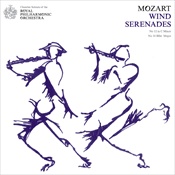
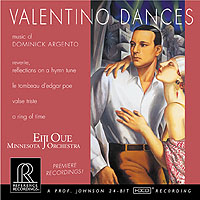
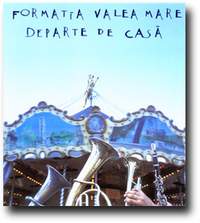
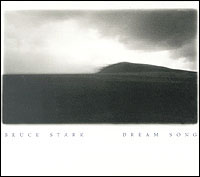
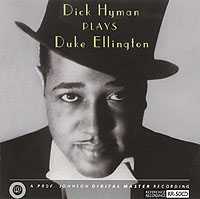

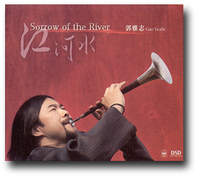
Reviews
There are no reviews yet.